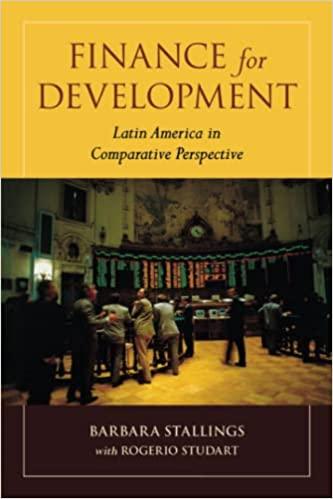Question
Benefits of diversification. Sally Rogers has decided to invest her wealth equally across the following three assets: 1a.What is the expected return of investing equally
Benefits of diversification. Sally Rogers has decided to invest her wealth equally across the following three assets:

1a.What is the expected return of investing equally in all three assets M, N, and O? (Round to two decimal places.)
b. What is the expected return of investing in asset M alone? (Round to two decimal places.)
c. What is the standard deviation of the portfolio that invests equally in all three assets M, N, and O? (Round to two decimal places.)
d. What is the standard deviation of asset M? (Round to two decimal places.)
e. By investing in the portfolio that invests equally in all three assets M, N, and O rather than asset M alone, Sally can benefit by increasing her return by _____% and decrease her risk by ______% (Round to two decimal places.)
2a.What is the expected return of a portfolio of 50% asset M and 50% asset N? (Round to two decimal places.)
b. What is the expected return of a portfolio of 50% asset M and 50% asset O? (Round to two decimal places.)
c. What is the expected return of a portfolio of 50% asset N and 50% asset O? (Round to two decimal places.)
d. What is the standard deviation of a portfolio of 50% asset M and 50% asset N? (Round to two decimal places.)
e. What is the standard deviation of a portfolio of 50% asset M and 50% asset O? (Round to two decimal places.)
f. What is the standard deviation of a portfolio of 50% asset N and 50% asset O? (Round to two decimal places.)
g. Could Sally reduce her total risk even more by using assets M and N only, assets M and O only, or assets N and O only?(Select the best response.)
A.
No, none of the portfolios using a 50-50 split reduce risk.
B.
There is not enough information to answer this question.
C.Yes, a portfolio of 50% of asset M and 50% of asset N could reduce the risk to
1.50%.
D.Yes, a portfolio of 50% of asset M and 50% of asset O could reduce the risk to
1.50%.
States Boom Normal Probability 30% 50% Asset M Return 11% 8% - 1% Asset N Return 21% 13% Asset O Return - 1% 8% 20% 1% 11% RecessionStep by Step Solution
There are 3 Steps involved in it
Step: 1

Get Instant Access to Expert-Tailored Solutions
See step-by-step solutions with expert insights and AI powered tools for academic success
Step: 2

Step: 3

Ace Your Homework with AI
Get the answers you need in no time with our AI-driven, step-by-step assistance
Get Started


